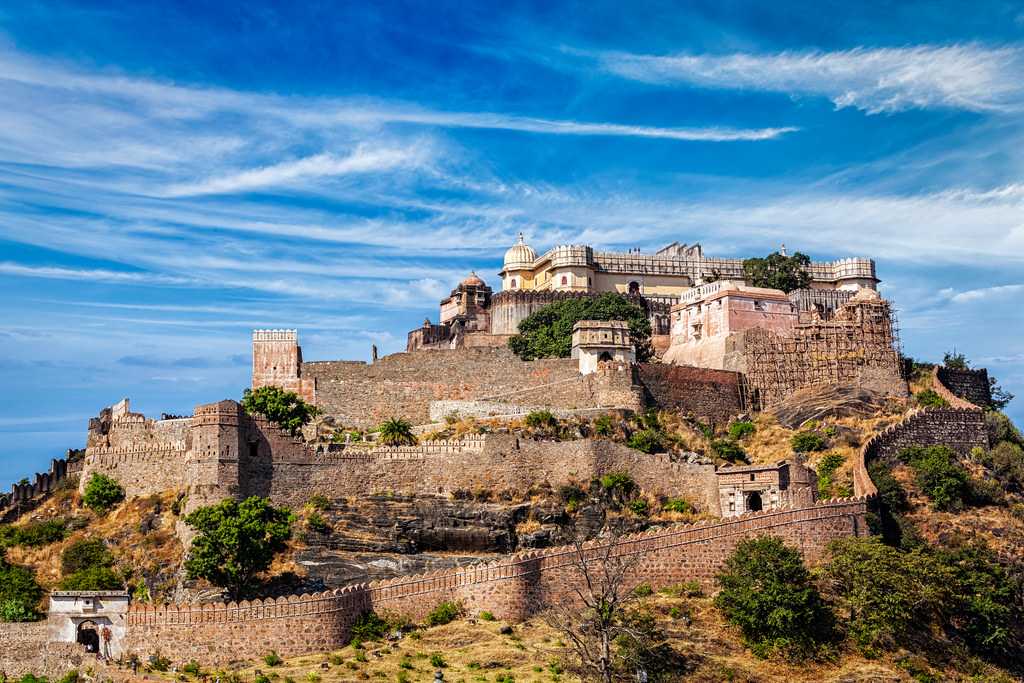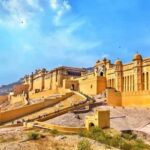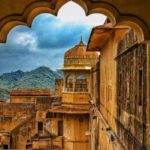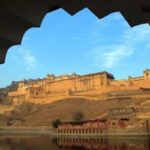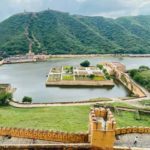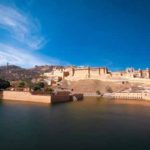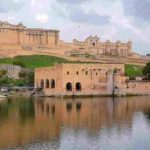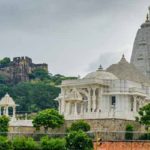Top Historical Forts Of Rajasthan –
Amber Fort Jaipur :-
Located on the foot of the Aravalli range and overlooking the Maota Lake, the Amber (Amer) Fort is famed for its artistic craftsmanship that is laid on a four level layout. It is one of the best places to visit in Jaipur and is a fine example of red sandstone and marble architecture comprising the Hall of Public Audience, Hall of Private Audience, Sheesh Mahal and Sukh Niwas. Built in the 16th century by Raja Man Singh I, the Amber Fort within its ramparts holds a rich blend of Hindu elements including several gates and cobbled paths and the Sheela Mata Temple. Today the Amber Fort arrests the mind of millions of travellers from all over the world and the major tourist attraction remains the light and sound show that is held at Kesar Kyari inside Amber Fort every evening. Another mind-blogging display that you shouldn’t miss is when the fort is drenched in honey-gold at sundown.
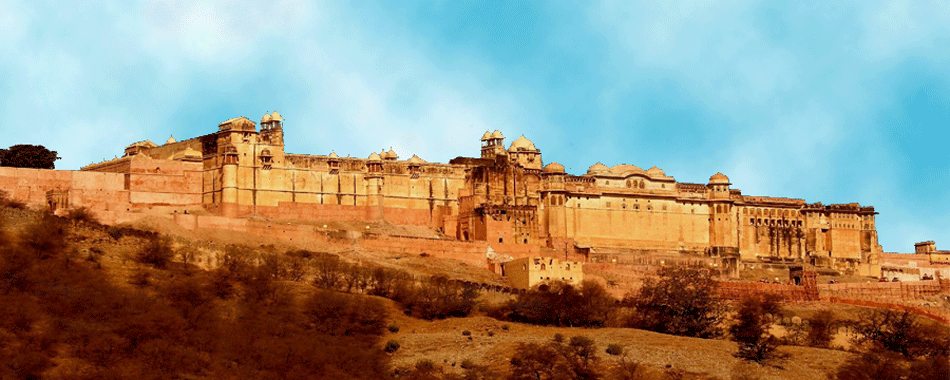
Taragarh Fort Bundi :-
Overlooking the city of Bundi, this impressive structure stands tall on a steep hillside. Built in 1354 with three gateways – Lakshmi Pol, Phuta Darwaza and Gagudi Ki Phatak – which are mostly in ruins today, the Taragarh Fort… though it has lost much of its sheen with time, it still continues to amaze the tourists with a rich diorama of the erstwhile Chauhan dynasty. The fort was crafted with an excellent network of tunnels crisscrossing the entire hill side but it is inaccessible to tourists for want of proper maps. The fort comprises huge water reservoirs, a small palace with some marvelous murals and stained glass and a tomb that is known as “Miran Saheb Ki Dargah”.
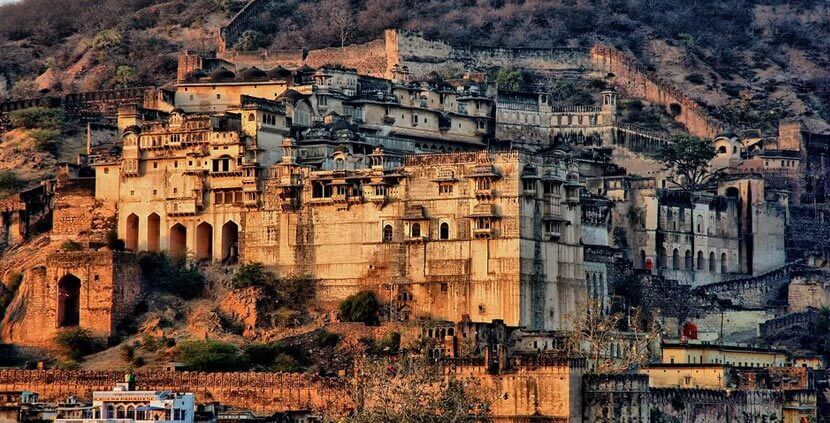
One of the prominent landmarks in the heart of Bikaner city, the Junagarh Fort is an outstanding example of art, architecture and culture. The composite structure with several palaces, temples and mansions holds a fusion of Mughal, British and Rajasthani style of architecture. Within the baronial fort walls lies the ruins of the old stone fort that was built in 1478 by Maharaja Rao Bika, one of the Rathore clans. The construction of the Junagarh Fort was started in 1589 and was completed in 1594. The most impressive being the Phool Mahal, which is the oldest part of the fort. Some other elegant architectural work are reflected from the Har Mandir, Karan Pol, Suraj Pol, Chand Pol and Fateh Pol. The intricately carved Jain temples and havelis within the rampart are the other tourist attractions in Bikaner.
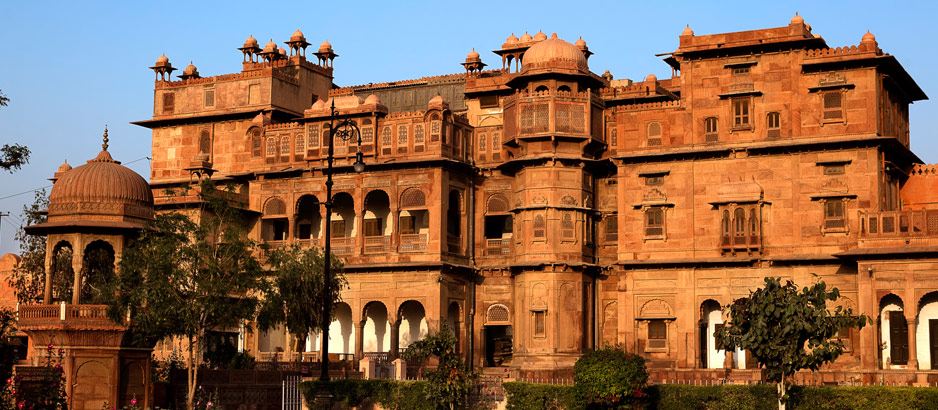
Jaisalmer Fort (Sonar Quilla) Jaisalmer :-
Built in the mid of 12th century by Rawal Jaisal, the massive fortification overlooking the Jaisalmer city amid the Thar Desert is one of the largest fortifications in the world. The Jaisalmer Fort, which is often dubbed as Sonar Quila, is a yellow sandstone architecture that is rimmed with 3 layers of walls and maintains 99 bastions, two major cannon points and several architectural structures including the Royal Palace, four massive gateways, merchant havelis and temples belonging to both the Hindu and Jain religion. The Shree Nath Palace and Vyas Haveli are some of the popular tourist attractions inside the Jaisalmer Fort. There is also a museum that exhibits a fine collection of armours, portraits and paintings dilating the heroic period of the Rajput clans. At the entrance of the fort there is a small market where you can shop some Rajasthani traditional attires. The amazing view of the Jaisalmer City from the canon points and horizon at the sunset are major tourist attractions.
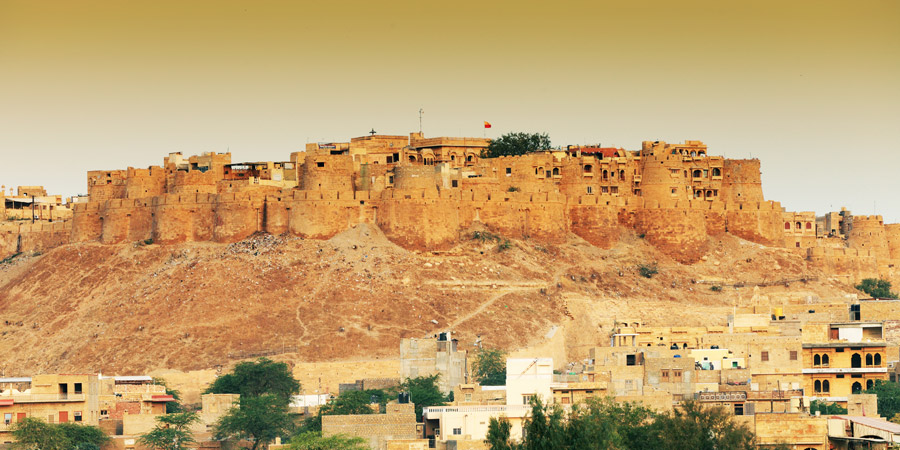
The Mehrangarh Fort is one of the important historical sites in India which has witnessed several battles against the Jaipur and Bikaner army. The foundation stone of this imposing fort was laid atop a hill by the Rathore ruler Rao Jodha with the help of Rao Nara in 1459. Later it was extended by Jaswant Singh, who ruled between 1638 and 78. The fort is ramped up with a series of seven gates including Jayapol which commemorates the victories over Jaipur and Bikaner armies; Fattehpol which marks the defeat of the Mughals; Dedh Kamgra Pol; and Loha Pol hold an important place in the history of Rajasthan, Within the fort complex you will also come across some of the best palaces of Rajasthan – Moti Mahal, Phool Mahal, Sheesha Mahal, Sileh Khana and Daulat Khana which are notable for having exquisite architectural works with intricate carvings and expansive courtyards. Most of these palaces today together comprise a museum that displays a vast collection of palanquins, howdahs, royal cradles, miniatures, musical instruments, costumes and furniture. It also hosts several galleries housing antiques belonging to the Mughal emperors, armours belonging to several Rajput clans, and turbans. The fort complex also holds a temple, cenotaphs and canons.
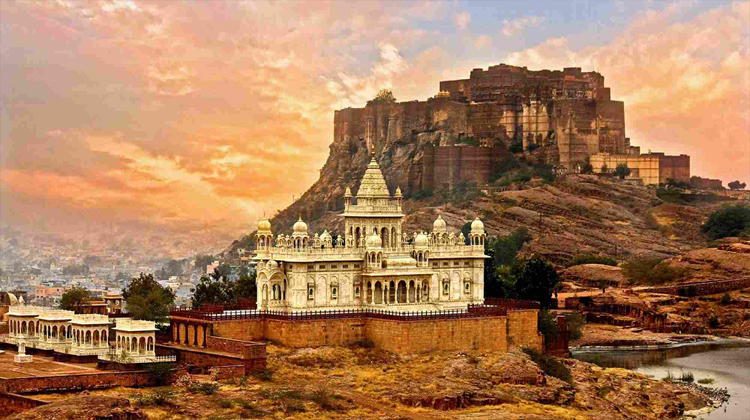
Chittaur Fort Chittaurgarh :-
One of the oldest forts in Rajasthan that was built in the 7th century during the Mauryan period… the Chittaur Fort is yet another magnificent architecture that arrests the eyes of travellers from all over the world. It is a UNESCO World Heritage Site in India that is ramped up on a hilltop spreading over an area of 692 acres and unfolds the chivalrous history of the Mewar rulers of Sisodia. The Chittaur Fort has been witness to several battles, of which the Mewar Kings against Allauddin Khilji in 1303, Rana Sanga against Mughal Emperor Babur in 1527, Bikramjeet Singh against Bahadur Shah in 1535, and Maharana Udai Singh II against the Mughal Emperor Akbar in 1567 (final siege) holds an important place in the royal history of Rajasthan. The fort complex comprises approximately 65 historic structures. The seven massive stone gates – Padan Pol, Bhairon Pol, Hanuman Pol, Ganesh Pol, Jodia Pol, Laxman Pol and Ram Pol (the main gate); palaces include the Rana Kumbha Mahal, Kanwar Pade Ka Mahal, Ratan Singh’s Palace, Badal Mahal and the beautiful Padmini’s Palace, which is one of the must visit palaces in Rajasthan; memorials such as Vijay Stambha and Kirti Stambha and several cenotaphs; and ancient temples dedicated to Hindus and Jains like Kalikamata Temple, Kshemankari Temple, Kumbha Shyam Temple, Adbuthnath Temple, Shringar Chauri and Sat Bis Devri are the most intensifying structures in the fort complex that holds the incredible part of the Rajasthan Tourism.
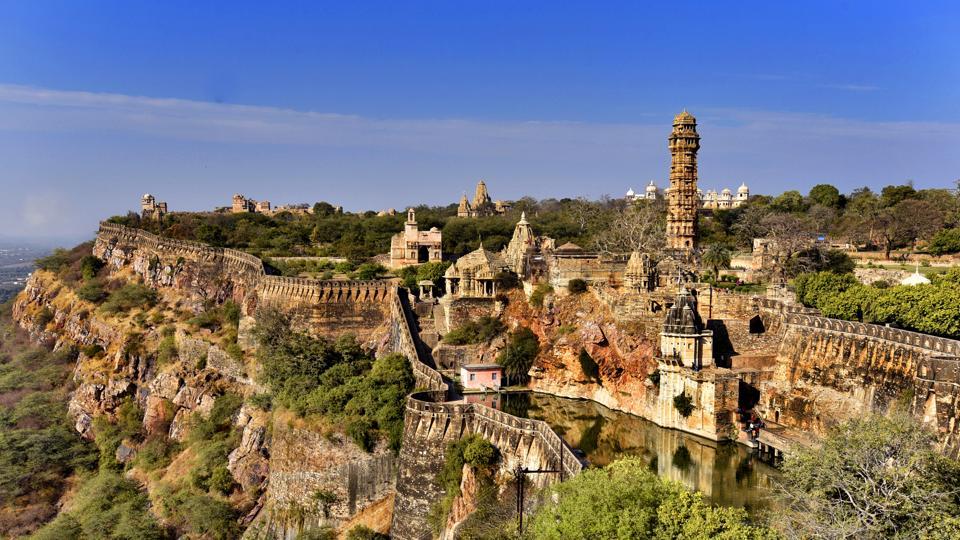
Kumbalgarh Fort Kumbalgarh :-
Having a vast history… the Kumbalgarh Fort is one of the significant heritage sites in Rajasthan widely known for its serpentine 36 kilometers long wall comprising seven huge imposing gates – Hulla Pol, Hanuman Pol, Ram Pol, Bhairava Pol, Paghra Pol, Top-khana Pol and Nimboo Pol which are bolstered by watch towers and bastions. It was built in the 15th century atop the Aravalli Mountains by Maharana Rana Kumbha. Within the fortification… there are several palaces and more than 300 temples, of which the Badal Mahal (birth place of Maharana Pratap) holds a strong place in the history of Rajasthan. The Shiva Temple is yet another beautiful work of architecture that is worth visiting.
